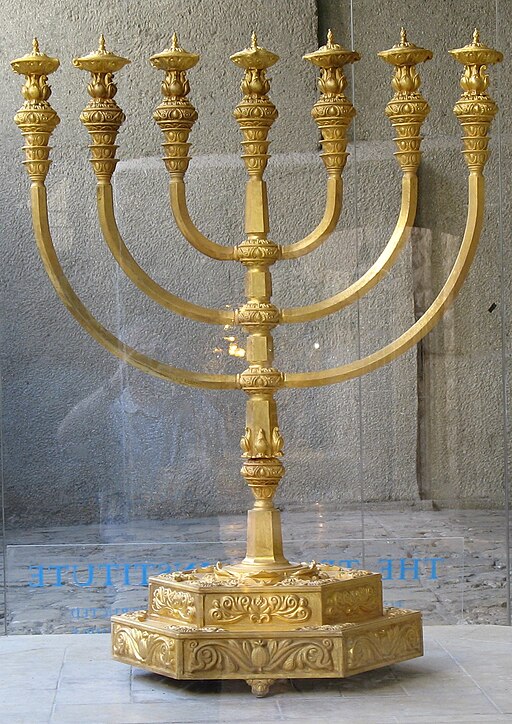When we left off, things were bad.
The kingdom of Israel and the kingdom of Judah were defeated, and almost all of the Israelites were exiled from the Holy Land.
The Israelites of the northern kingdom, Israel, are dispersed and forever lost (The Ten Lost Tribes, remember?).
The Israelites of the southern kingdom of Judah are exiled to Babylon.
When did the Jews return from Babylon?
How did they build the Second Temple in Jerusalem?
And how long did the Second Temple in Jerusalem last?
Let’s find out together!
It all starts when a new hope arrives. A new superpower rises.
This time it’s the Persians.
The Persian Emperor Cyrus conquers Babylon and becomes the new power of the world.
Cyrus is a religious man, and believes that gods are either good or bad. And luckily for the Israelites, he believes that the God of Israel is indeed good.
Cyrus even claims that the Israeli God visited him one night, and commanded him to re-establish the worship in Jerusalem and rebuild the temple.
So, he orders the temple rebuilt, and sends Israelites back to Jerusalem to worship their God.
Perhaps he thought it’s a shame what happened to Pharaoh and didn’t want a rerun…
So after about 50 years of exile in Babylon, Israelites return to the Land of Israel once again, and in 538 BC as Judah is reestablished.
However, the Israelites are sent to Judah for the sole purpose of worshipping their God. This time around, Judah is not a kingdom, but a theological state, a province of the Persian Empire.
The worshiping begins – with a tremendous amount of effort the temple is rebuilt, as well as the walls of Jerusalem.
And the religious heart of the Jewish people beats again in the City of David.
The Second Temple in Jerusalem was the Jewish holy temple. It stood on the Temple Mount in Jerusalem (right where Solomon’s Temple stood), between c. 516 BCE and 70 CE and gave name to the Second Temple period.

Warning: the following paragraph contains some spoilers for the next chapter…
According to the Bible, the Second Temple was originally a modest structure constructed by a number of Jewish exile groups that returned to Jerusalem.
During the reign of Herod the Great, the Second Temple was completely refurbished, and the original structure was totally overhauled into the large and magnificent edifices and facades that are more recognizable.
Much as the Babylonians destroyed the First Temple, the Romans destroyed the Second Temple and Jerusalem in 70 CE as retaliation for an ongoing Jewish revolt. The Second Temple in Jerusalem lasted for a total of 585 years (516 BCE to 70 CE).
At around 300 BCE, Alexander the Great conquers the Land of Israel from the Persian Empire. He was great, indeed,
Now the Jews are part of the Greek Empire, and are left alone for another 200 years.
That is, until 168 BC, when a Greek ruler places restrictions on the practice of Judaism. He outlaws Judaism, desecrates the rebuilt Temple and massacres thousands of people in Jerusalem.
Ask yourself, WWTJD – what would the Jews do?
Well, as a tiny minority being religiously and physically oppressed by the mighty Greek empire, they do the only logical thing – they revolt!
If you ever heard about Hanukkah, this is where it comes from.
A Jewish priest named Mattathias (of the priestly Hasmonean family) and his five sons lead a large-scale rebellion against the vicious ruler Antiochus. When Mattathias dies in 166 B.C., his son Judah steps up. And within two years the Jews successfully drive the oppressors out of Jerusalem. Hoorah!
Mattathias’s son Judah is also known as Judah Maccabee (“the Hammer”).
Isn’t it nice that the man who saved Judah is named… Judah?
Anyway… Judah and his followers cleanse the Second Temple, rebuild its altar and light its menorah.
After that, nobody wants to mess with the Jews, and they receive semi-independence under the Hasmonean dynasty.

The menorah is a gold candelabrum whose seven branches represent knowledge, universal enlightenment and creation and were meant to be kept burning every night.
The menorah was used in the ancient Temple in Jerusalem and has been a symbol of Judaism since ancient times. Today, The Emblem of the State of Israel shows a menorah surrounded by an olive branch on each side, and the writing “Israel” (in Hebrew) below it.
Fun fact: you can see a depiction of the menorah on the Arch of Titus in Rome, Italy.
But what do the Romans have to do with a menorah? How do they even know about it?
Find out as our story continues in Chapter Six – The Roman-Jewish wars in Judah!

